When designing, purchasing, or building your campervan, air conditioning is one of the considerations you need to make, especially if traveling in warmer climates—cooling a van while driving is pretty simple. It is simple since you need to use the vehicle’s built-in air conditioning. However, when stationary or camping, you’ll likely need a separate alternative, similar to what other RVs use.
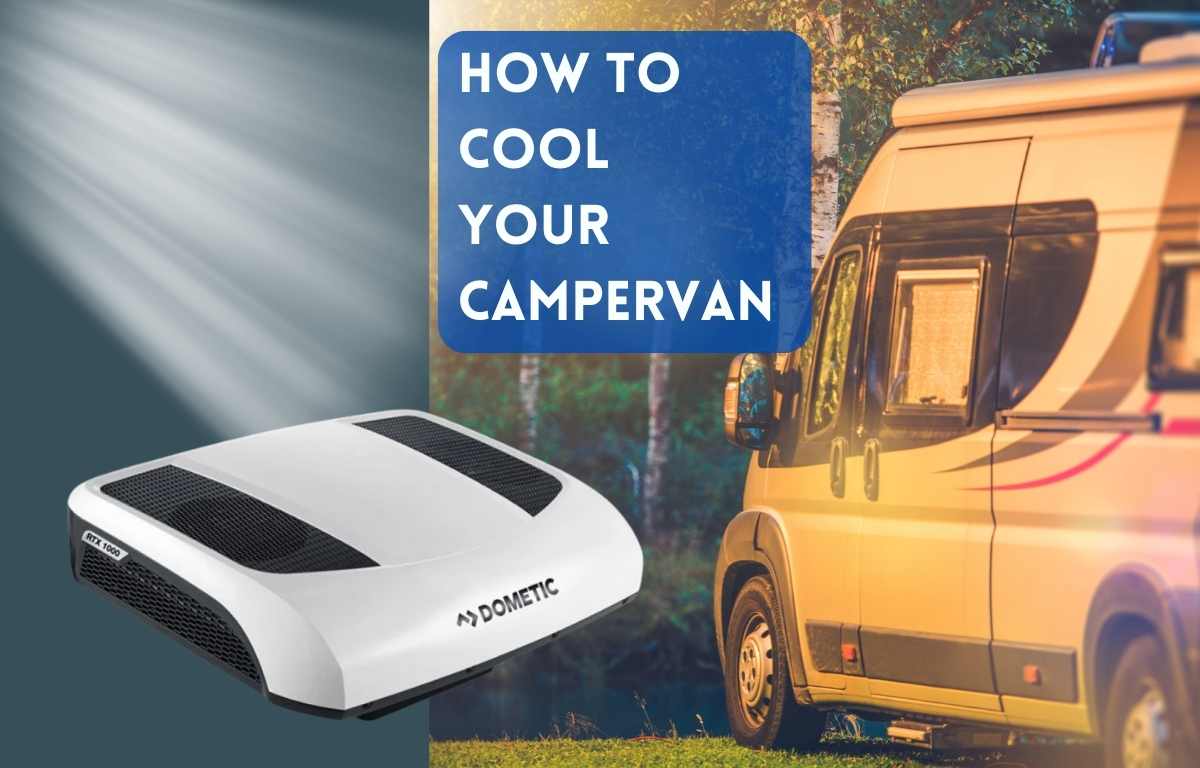
Campervans are great for exploring as they allow you to take road trips off the beaten path and camp in various locations. Many of these will be located off the grid, meaning you won’t have access to shore power. You may also have the luxury of connecting to shore power at a campground. To maintain the utmost versatility, it’s best to choose an air conditioning setup that allows you to cool your interior space regardless of what type of electricity you’re using (grid, generator, or even solar).
The great thing about a campervan is the small area you’ll need to cool. Since vans have fewer square feet (or cubic feet) to cool, it’s easier to generate cold air in your living area during the summer heat and have a more comfortable ambient temperature inside.
Let’s look at some options for cooling your van:
Cooling without air conditioning
While an air conditioner is a great appliance in hot weather, you can make some improvements in your van to do without it in some situations. By controlling airflow in your van, you can bring in fresh, cooler air and expel the hot air that builds up inside the living area. This is most feasible when camping in areas where the temperature drops in the evening and at nighttime. Fans do a great job and use very little electricity to move air throughout your van. This option works best when you can open windows or vents.
A roof vent with a fan is the best option to remove hot air from inside the vehicle. Since hot air rises, a roof vent will exhaust the warmer air efficiently, and opening a few windows, will pull in the cooler air. The more windows you have in your van, the better. By opening and closing certain windows, you can find the best setup that maximizes airflow for your situation.
Roof vent fan:
Regardless of if you choose to add air conditioning or not to your van, one upgrade you will want to make is to install a roof fan. Since hot air rises, being able to exhaust it is critical to cooling your campervan. Even if you use air conditioning, a fan will help pull the hot air out of the interior living quarters, allowing your air conditioning to cool quicker.
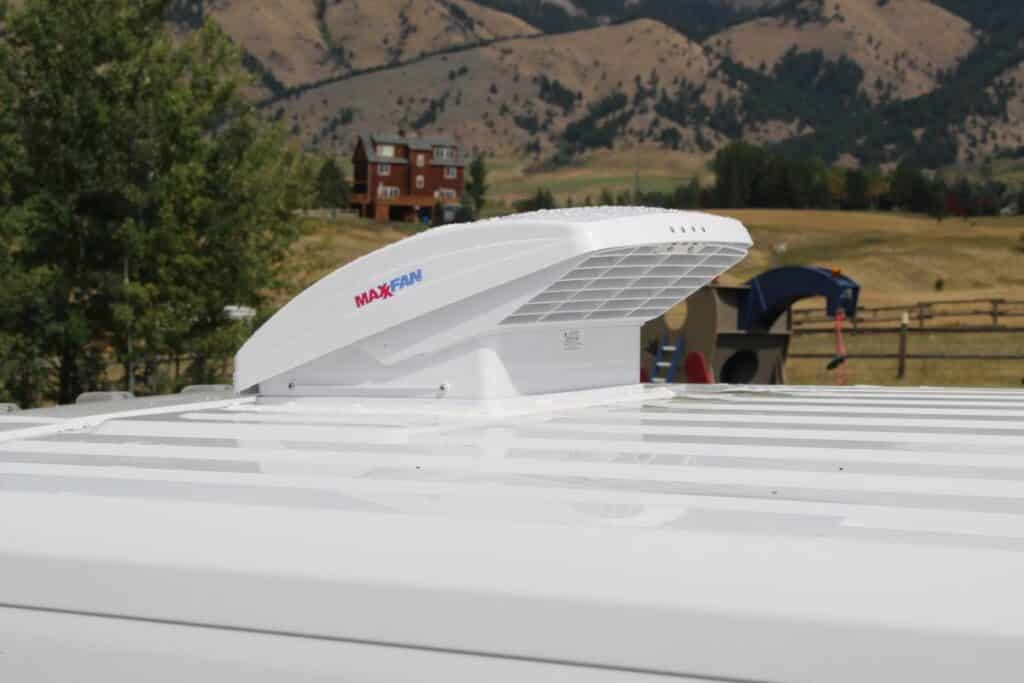
If you are doing a van conversion, you’ll need to cut a hole in the roof to install the fan. It sounds more terrifying than it is. With a little patience and prep work, this is a doable DYI project. If you are purchasing a van with a roof fan already installed, upgrading it to something more powerful, if you even need to do that, is fairly simple.
Upgraded fans with a higher CFM rating will exhaust air more quickly than one with a small fan sitting below the screen. An upgraded fan may make the most sense if you plan to cool your van primarily with airflow.
One of the best fan units on the market today is the Maxxair Fan, which uses little power but makes a huge difference in airflow in your van. It’s a great choice for van campers who skip the air conditioner and rely on fans and solar power.
Choose your campsite with cooler air in mind.
One of the most important things you can do to reduce heat inside your van, regardless of if you’re using an air conditioner for the fan method, is to park/camp in an area that is cooler and out of direct sunlight. Try to find a shaded area under trees. Temperatures will be surprisingly much cooler in the shade. Also, camping near water can allow you to take advantage of the cooler air coming off of a river or lake. This is a great idea if you’re using a fan to cool your RV. You can more easily draw in the cooler air from the water and exhaust the warmer air through a roof vent.
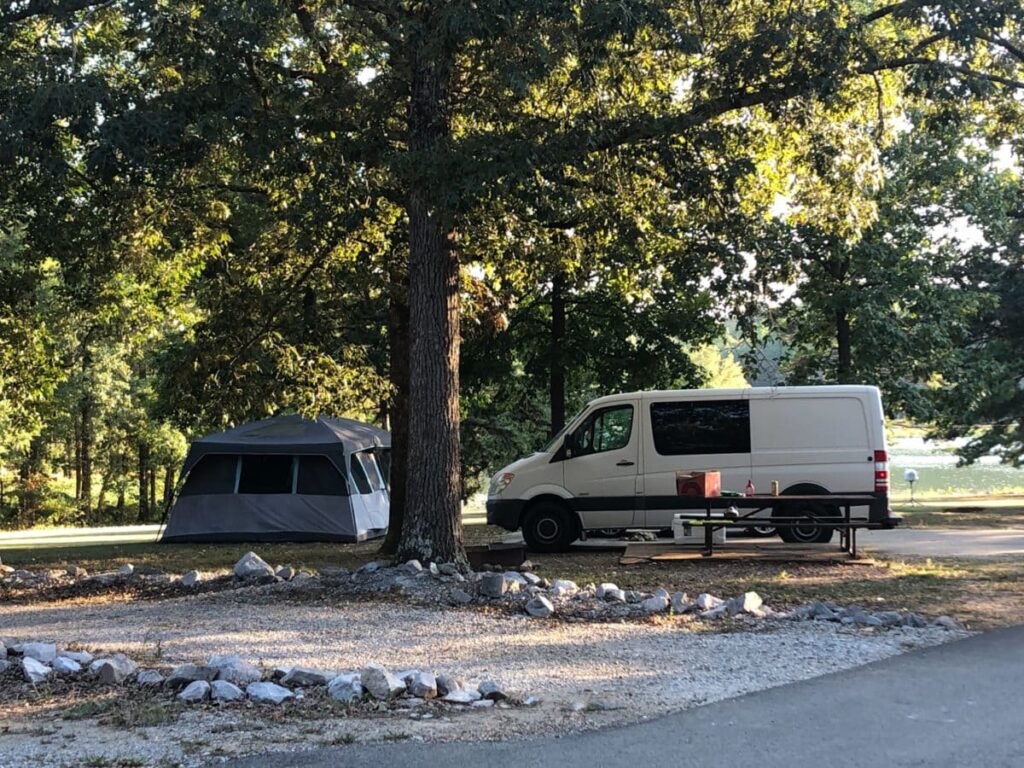
Campervan Insulation
It’s fairly common to know that more insulation is better if you want to keep yourself warm in the winter. However, the opposite is true when it comes to cooling your campervan. RVs and vans are typically not very efficient in maintaining interior temperatures. A large reason for this is the lack of installation. Unlike your home, which likely is well insulated, a vehicle has thinner walls and is more impacted by the outside environment.
One way to combat this inefficiency is to increase insulation wherever you can. Better insulation will keep the inside temperature more stable and, in the summer months, even on hot days, prevent less loss of cooler conditioned air. Since you can’t typically add insulation to the walls, it’s best to start in the areas where insulation is lacking, which are often the windows, doors, and vents.
Insulate your windows
Vehicle and RV windows are poor isolators. You can fix this problem by sealing them up. In the winter, when you’re not opening your windows, you can apply shrink plastic over your windows. While this may not seem like much, it creates a second barrier to the elements. You can purchase these kits at any hardware store or on Amazon. They’re relatively inexpensive, and one larger box will be more than enough for a typical RV. To install, you simply apply double-sided tape, included with the kit, around the edge of the window. Next, you cut a piece of plastic to the shape of the window, leaving extra on each side. Next, press the plastic to the tape and create a tight seal. The following step is the fun part. Using a hairdryer or heat gun on low, slowly apply heat to the plastic and watch it shrink and tighten up. If done correctly, you won’t be able to notice the plastic.
While this may not be ideal in the summer, especially if you’re opening your windows to allow for airflow, you can do this for windows that don’t open, or you don’t typically use. However, the benefit of opening your windows to air is more important than sealing in cooler air. In this situation, reflectix bubble insulation over your windows is a better alternative.
Reflectix bubble insulation is a simple product similar to packing material, but with silver, reflective material that won’t absorb the sun’s heat. You can cut the material to the shape of the window and secure it with Velcro for easy removal during the day when you want some natural light or open the windows.
Window coverings and curtains
If you’re camping in a van, you likely already thought of privacy and have window coverings or curtains. However, you may not have considered the material used for it. Thicker curtains that fully cover the windows make excellent insulating material and, when combined with reflectix insulation, help seal up your windows and prevent air loss.

Typically, the thicker the material, the better. Heavier curtains, like blackout ones, work very well. Not only will you improve your privacy and reduce the bright morning sun from waking you up too early, but you’ll also keep the van much cooler.
Air conditioning options
When choosing to install an air conditioner in your van, you have several different options. You can install rooftop AC units or portable ones. In some instances, if you’re DIYing your van build, you can also install one on the side of your RV (similar to a house window AC). The main benefit of a rooftop air conditioner is primarily a space savings decision. Since space is precious in a campervan, the more you can do to increase it, the better. A roof campervan air conditioner will give more reliable comfort than a portable unit, but it’s usually a little more expensive, and the installation is much more involved.
With portable units, you’ll also need to consider venting, but this can typically be accomplished through a window. With portable units, you’ll also need to plan for storage space for the AC and realize that it will be nosier since the compressor is inside the van. However, if you don’t have an AC and want one, a portable unit is the easiest way to get one in your van.
Roof Mounted AC 12-volt air conditioners.
If you’re building your van, you’ll need to cut a hole in the roof and run wiring to power the AC. While it seems like a big job best left to a professional, many van campers have done this work themselves. If you undertake this project, follow the manufacturer’s insulation instructions, measure carefully (2-3 times), and seal it properly with appropriate weather sealant.
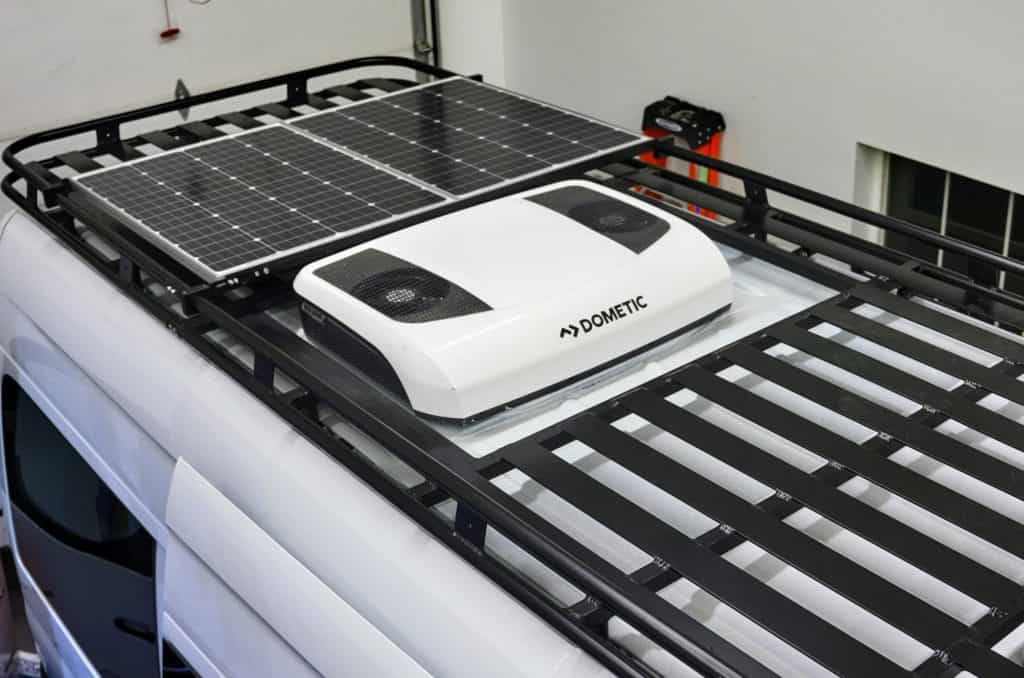
Now, if you purchased a van meant for camping, there is a good chance you have an AC installed or, at a minimum, have a vent that can easily be removed and converted into an AC unit. When shopping for a van, it’s a good idea to consider this option first, especially if you’re camping on warm days, since adding it later can be more expensive than preinstalled. If you find a van that you like but doesn’t have a built-in AC, ask if it’s prewired for one if you decide to install one. This will save you time and money down the road.
120V vs. 12V DC units
One of the benefits of van camping is mobility and the ability to take your camper off-grid in locations you can’t always easily take a traditional travel trailer or larger RV. For this reason, you may be less reliant on full hookups at campgrounds and may opt for alternative power, such as solar or using a large battery bank.
When it comes to air conditioners, you traditionally only had one option: a regular 120V unit powered by the grid. If you wanted to run it from batteries, you would need a large battery bank that made the task quite challenging for high-demand appliances like air conditioning.
Recently, the market has started to see a surge in 12V AC options. The technology behind a 120V and a 12V AC system is the same. However, the main difference is that a 12V air conditioner uses a highly efficient compressor designed to work off a 12V DC current. By reducing the need to convert AC to DC, you avoid the common energy loss, which can be between 10-25%. In a 12V system, your compressor will run directly from the DC.
The upside to a 12-V unit is efficiency. Some leading models claim a 70% improvement in efficiency over a 120V unit. While that figure may be stretching things a bit, especially since a 12V unit may be smaller and run less, it’s fair to say that you should see a substantial efficiency improvement with a 12V system.
The downside of a 12V unit will be most noticeable when it comes to cost. A comparable 12V unit may cost you up to 4X the price of a 120V unit. While this may seem excessive, it may make the difference in being able to run you’re AC off of solar panels and batteries vs. only being able to run it off the grid.
Powering a 12V AC unit
While powering any AC unit from batteries or solar is unique, if you primarily plan to utilize a 12V power source, you need to consider much more than simply the model AC unit to purchase. Primarily, you need to focus on your battery bank and capacity for running you’re AC along with all other 12V appliances such as your refrigerator, water pump, lighting, etc. You’ll also need to consider other items in your electrical system, like the wire gauge (size), a converter when you’re plugged into the grid and monitors to ensure that your 12V system is healthy and not overloading your battery bank.
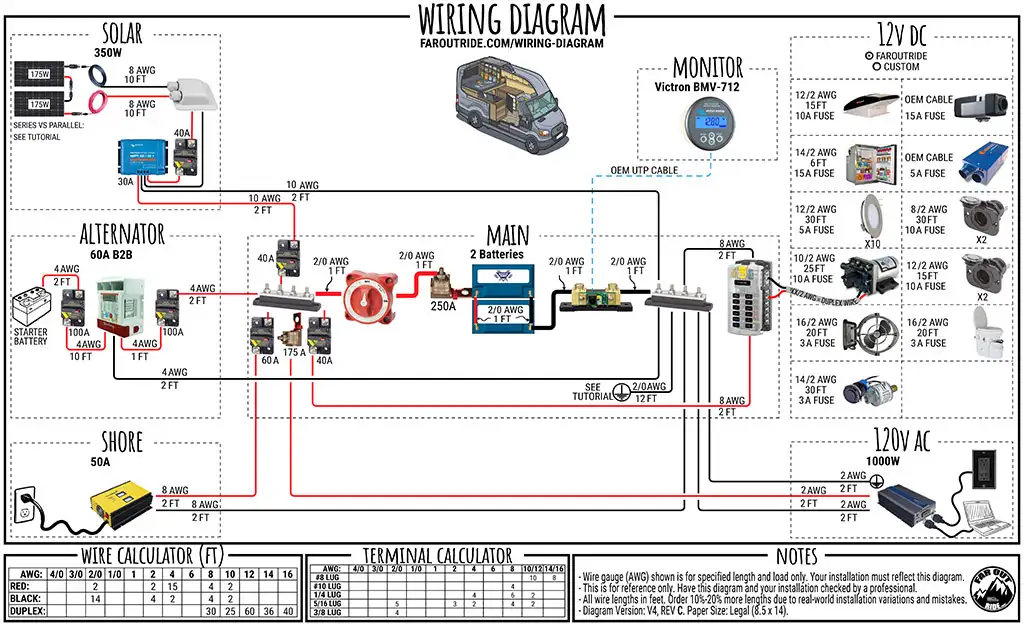
If you’re building your van or upgrading to a 12V AC unit, you’ll need to do a lot of planning. A prebuilt van will likely have much of this figured out for you.
Can you just purchase a 120 Volt AC unit?
Of course, you can, but keep in mind the limitations. A 120 V unit may make more sense if you plan to do a lot of regular camping and not run the AC off the batteries frequently. A more affordable option for many van campers is to install a typical 120V AC unit and plan to primarily use it when powered off the grid. When boondocking, you will have the option of cooling with fans and airflow or running a generator for you’re AC. You can increase your battery bank too, but this may be cost-prohibitive if you plan to use your AC a lot off the grid, and it may not produce the desired results. However, there are tons of resources available online to help you do just that.
Best Air Conditioner for your campervan (12-volt systems)
Nomatic is one of the first companies to venture into the 12-volt air conditioner market, and their units have become a standard in vanlife AC cooling. It’s one of the best units for individuals looking for off-grid camping. The 3000 unit is available for a 12V or 24V setup and is designed with vans in mind, negotiating weight, efficiency, and low profile.
The downside to this unit is cost, which is one of the most expensive 12-volt units on the market. However, if you plan to spend a lot of time boondocking in hot temperatures, you will not go wrong with this unit. Its low power demand will enable you to run it off a battery setup.
The Nomadic 3000 operates on actual refrigerant and fits into a regular 1414 opening. The unit has a remote control, an easy installation kit, and a wiring harness to make the connections straightforward. It also has a 2-year manufacture warranty, providing peace of mind when making such a large investment.
The Nomadic 3000 unit adapts to your needs. It has two user modes (Eco and Powerful). When on Eco mode, the unit will keep your can cool when the outside temperature is 85 degrees or lower. When it gets hotter outside, you can switch it to Powerful mode, which will have a higher energy consumption but is good for those short periods when you need a boost of cooling. There is also a 200 unit, which is less expensive and provides less cooling power.
- Great for boondocking or when operating off batteries
- Clear and easy Installation.
- Quality unit from a leader in the industry
- Two years warranty
- Very Expensive
- Requires large battery bank if used on Powerful mode
The B-Cool 9000 RM is a super-efficient 12-V AC for your van. It’s less powerful than the Nomadic 3000 but also comes at a much more affordable cost (although still not inexpensive). It’s a great option for boondocking, especially if you’re using a quality battery bank, ideally with lithium batteries.
The unit has a low-profile design and functions very well to cool your van off the grid. It comes with an easy installation kit for those doing their own van conversions.
- 83.75-pound weight
- 37.8′′ length x 28.35′′ broad x 6.5′′ 19.7′′ height
- 10,230 BTU/hour
- 12 volt DC power source
- Great for boondocking or when operating off batteries
- Clear and easy Installation.
- Quality unit from a leader in the industry
- Two years warranty
- Expensive
- Less powerful than other unity (not a problem from vans)
Dometic is one of the leading names in the RV appliance market. They have an excellent history of producing quality RV air conditioners, and it’s no surprise they’ve entered the 12V U.S. market. This unit has been widely used in Europe for over a decade when van camping is more common. The RTX2000 is efficient and small, making it an excellent option for van campers and boondockers.
- High efficiency
- Very quiet
- Not the most powerful unit, but suitable for vans
- Expensive
This Mabru 12V rooftop AC 12V unit offers high efficiency and a 12,000 BTU cooling compressor. This unit works very well off a lithium battery bank and will provide great cooling at a low draw, thanks to its design. Mabru has been in the cooling market for some time now, primarily focusing on boat AC units.
This unit has three settings, which are designed to maximize your power supply. The major downside of the unit is that it’s not designed to fit into a common 14”x14” roof opening and maybe a little more difficult to install. However, once you have it up and running, it does an excellent job of cooling.
-59-pound weight
-Rooftop unit is 38.2 inches long, 33.8 inches wide, and 6.5 inches in height.
-18.1′′ broad x 11.4′′ long x 2.8′′ tall inside unit with vents and controls
-12,000 BTU/hour cooling capacity
-22-55 amps of power demand
-12 volt DC power source
- Exceptional cooling capacity
- Extremely efficient
- Clean design
- Expensive, especially if paying for installation
- More difficult to install
Other Options
In addition to roof-mounted air conditioners, campers also have the option to explore some additional cooling options. One option includes portable AC units. There are many different 120V portable units on the market in all different sizes. While I won’t go into detail on these, just be aware they will all need to be vented outside, likely through a window. They will work well, but you need to be connected to the grid or have a large battery bank and low expectation for runtime off the battery.
120V portable units are a good option if you are connected to the grid or plan on using a generator when camping. If you’re just looking for something for the occasional use, this may be an affordable option and does not require any major modifications to your van.
12V Portable AC Units
While the options are growing for 12V roof-mounted units, the same isn’t true for portable AC unit options. While few are available, they’re not as common and sophisticated as roof models. One of the most popular models is the Pro Breeze Mark 2.
SAVE $50 with Code: SAVE50
The Pro Breeze uses about 1/5 the power consumption of a conventional air conditioner. You can run the AC unit of the vehicle’s 24V battery supply or use an included battery for 3-5 hours.
The unit will cool the air from the vent by 30 degrees F after only 10 minutes. The great thing about this unit is its portability. When connected to the included battery, you can move it around the van to help cool the area you’re using (it only weighs 16.5 pounds). However, you will want to connect it to your battery bank for longer cooling options.
Mini Split Unit
More and more van campers and RVers are installing mini-split units to help cool their units. Mini-split AC units are relatively energy efficient, do a great job of cooling a small living space, and are super quiet. Installing one takes some creativity, though, since the compressor needs to be mounted outside the RV while the fan unit is mounted on the inside wall. You’ll also likely want to choose a smaller unit for a van, preferably one that runs off a regular 20A circuit.
Some lesser-known brands offer 12V options, but they seem to be more of a DIY experiment rather than something widely used. If you opt for a traditional 120V unit, you will likely need to find an efficient and small unit. Many mini split systems also include a heat pump, providing heat to your van on cooler nights.
 Swamp Cooler
Swamp Cooler
A swamp cooler, or evaporative cooler, is a different type of cooling system. It essentially blows warm air over a moist filter, adding moist and cool air to the environment. These are very low energy demand appliances and are used by many van lifers. The main drawback to a swamp cooler is that it adds moisture to the air. If you camp in humid conditions, this will do very little to keep the van cool. However, if you are camping in a dry air environment, you should see a noticeable difference in comfort levels with this simple device. It’s a popular option and a great choice for western arid camping destinations and the best way to stay comfortable for little cost. They can also be run off a portable power station if you don’t have a large battery bank. A swamp cooler will not cool the air much- just make it a little more comfortable.
- The K2 will not cool a vehicle. However, it will typically cool people or pets in a vehicle that is not moving.
- The MightyKool K2 Evaporative Cooler produces 25 mph of cool air through each of two cool air vents.
- The K2 uses water only and no Ice to cool people or pets in campers, sleepers, boats, tents, or non-moving vehicles.
Window Air Conditioner
While not typically built for RVs and vans, a traditional home window unit can be modified to cool your RV. They pack a lot of punch for a low cost and size. For instance, you can purchase a small 5,000 BTU window unit for a few hundred dollars and, if connected to the grid, be able to cool your van adequately.

Window units will need some MacGyvering to install. If you have a window that opens enough, you can install it with a few modifications and maybe an outside brace. In some instances, you can remove a window and more permanently install it in your van. Some setups have it installed in the rear window.
Window units are inexpensive and easy to replace if something happens to them. They’re great for cooling a small space and don’t take up much space when installed. However, they don’t work well off battery power, and you’ll have an unsightly box protruding from your vehicle.
Conclusion
In summary, it’s important to note that there is no single best option for cooling our campervan. The best campervan air conditioner will depend on our needs, power supply, space limitations, and budget. You can easily spend a lot of money on a large solar system and the best air conditioner on the market, but that may not be necessary for every camper. Start by figuring out where you plan to camp, decide how important air conditioning is to you, and then look for a setup within your budget. If you already have an opening in your roof, the easiest solution is to find a roof-mounted unit that fits that space. Also, ensure you consider your power system as you don’t want to install an air conditioner that you can’t run. Best of luck, and stay cool!
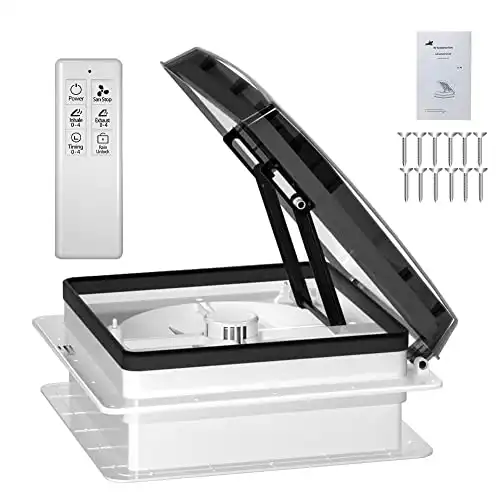
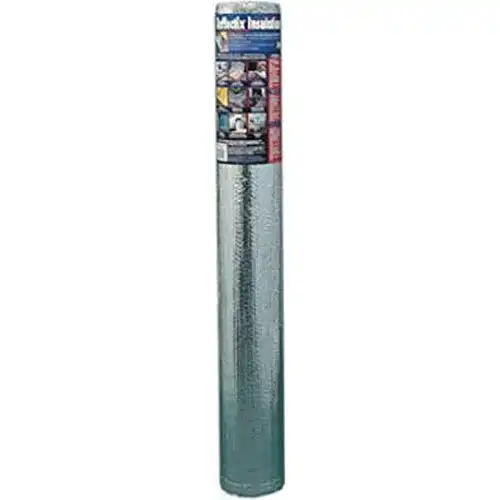
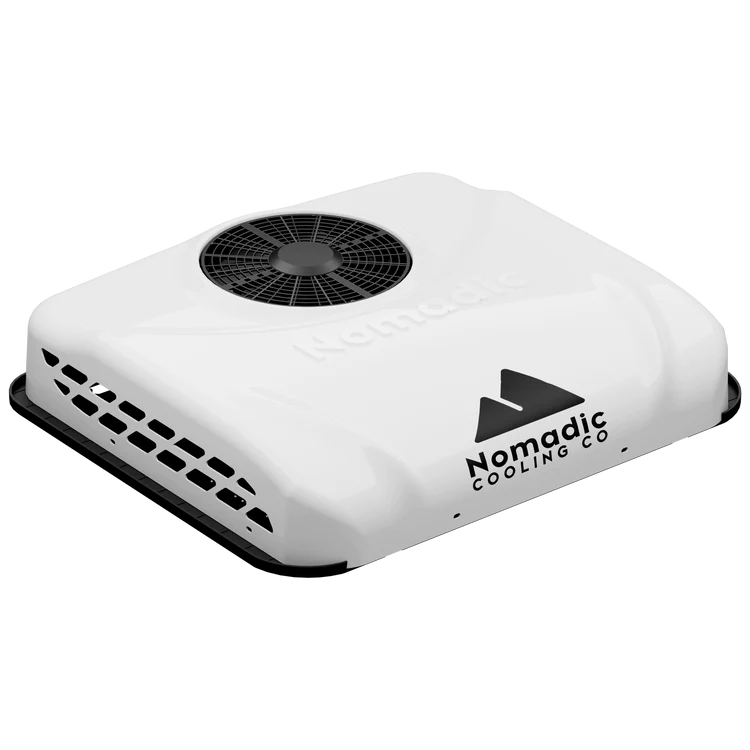
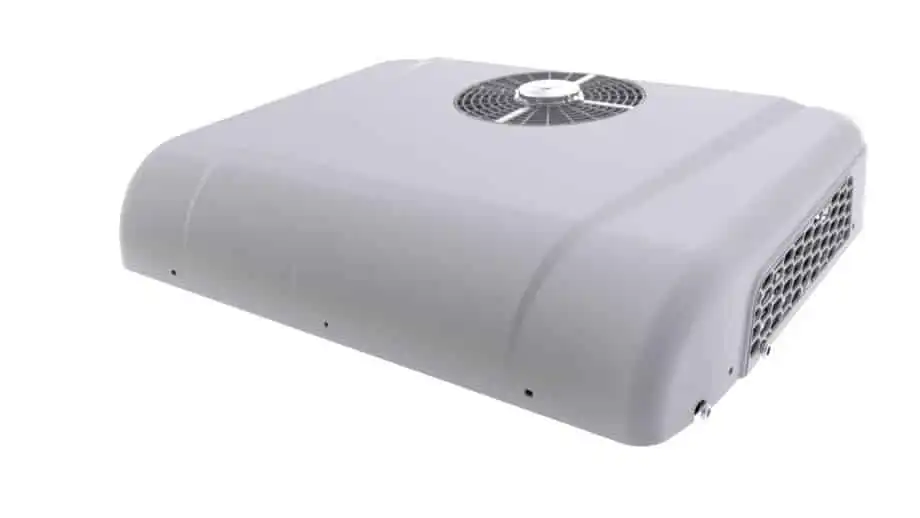
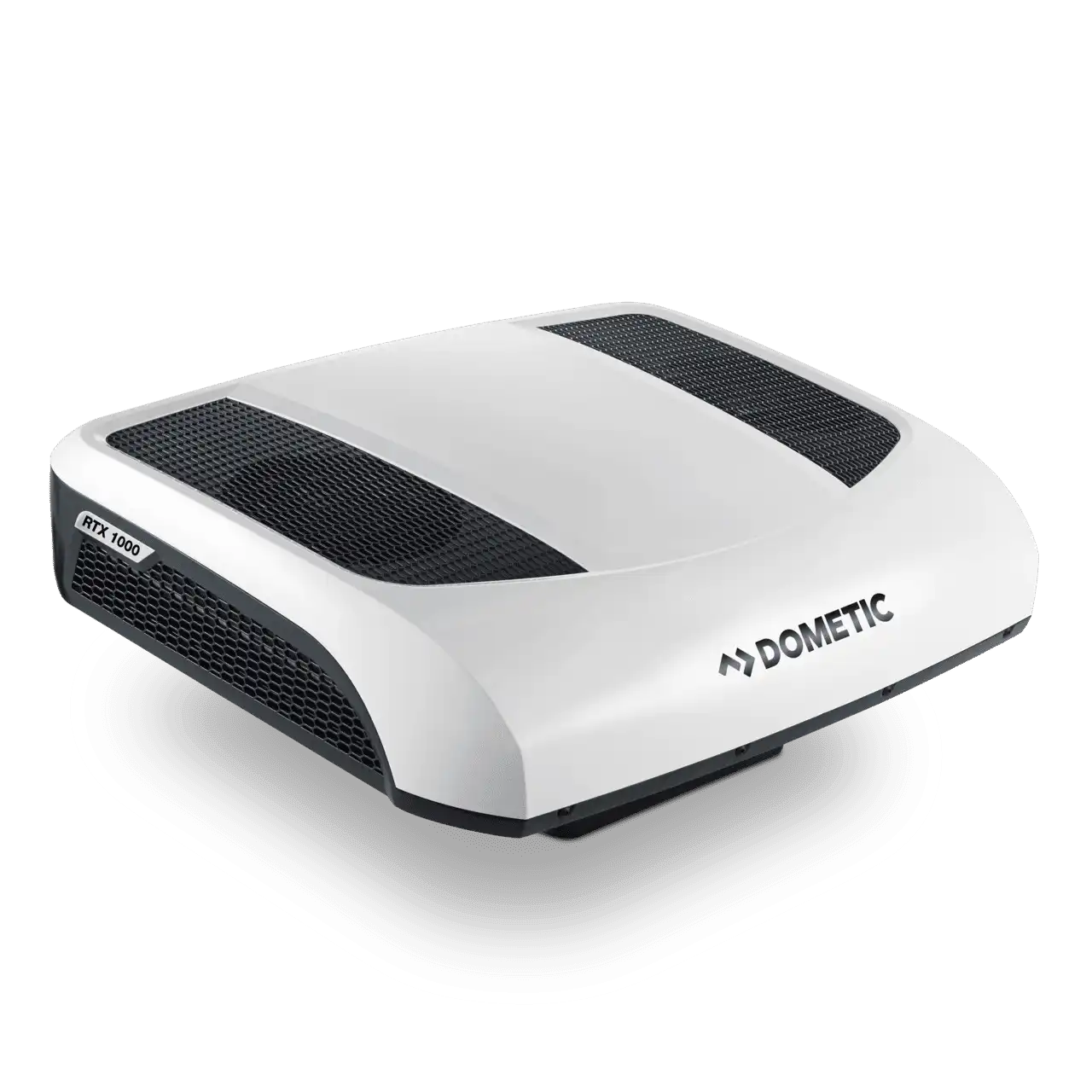
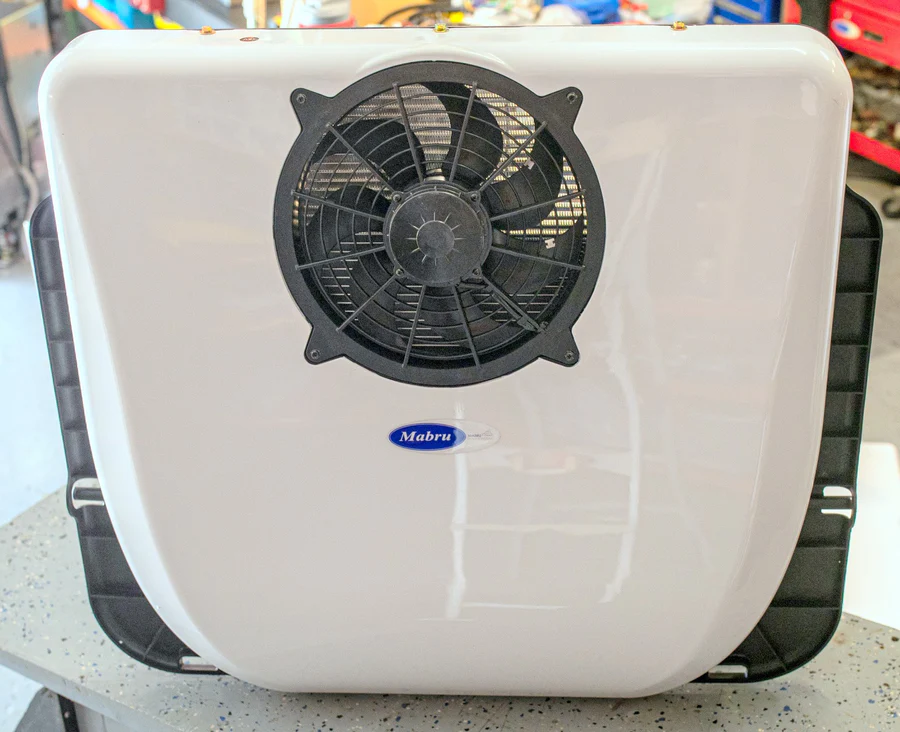

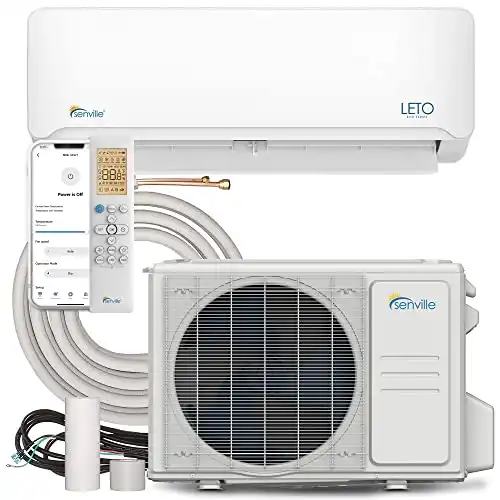
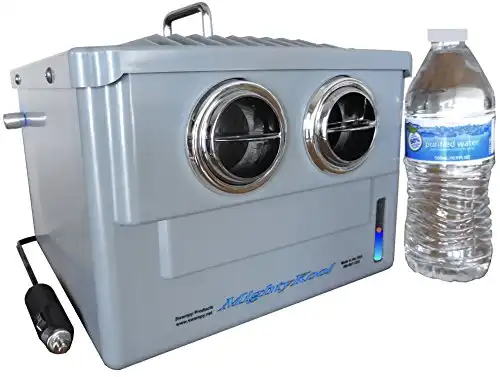

Where can someone buy your product in Nigeria?
Sir/Madam,
My name is John Harkins and I’m in the purchasing department at PPG incorporated.
We would like to explore a possible cooperation with your company in sourcing for the following items:
Electric car Fridge/ coolers
Thermoelectric Iceless 12V Cooler w/ Bottle Opener
We would appreciate it if you could let us know more about this inquiry.
Please contact me if you have further questions.
Note: Terms are net 30 and it can be discussed once we get a response from you.